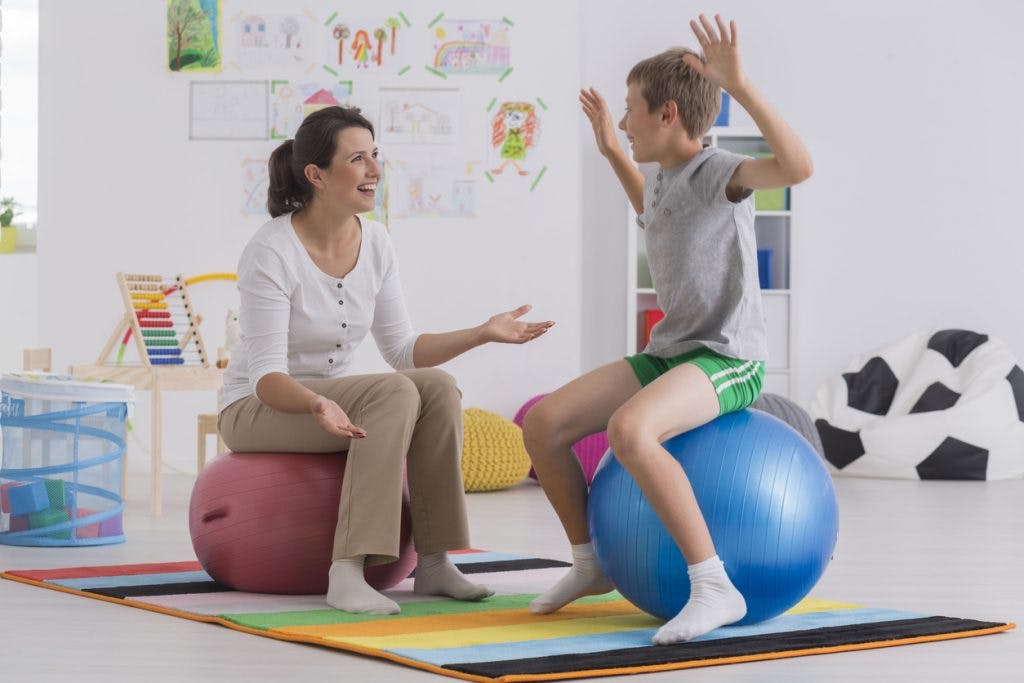Wondering what the best core exercises for cerebral palsy patients are?
Cerebral palsy describes a whole spectrum of different motor impairments at varying severities. As a result, no two children are going to experience cerebral palsy the same way. Some may be affected in the legs while others may be affected on one side or throughout their entire body.
This article will share a list of 8 core exercises for cerebral palsy patients, as well as suggestions to make the exercises easier or more challenging.
Core Exercises for Cerebral Palsy
A strong core is essential for good balance, posture, and overall health because it connects the upper and lower body.
Individuals with cerebral palsy and a weak core are more likely to experience difficulties with digestion, shortness of breath, and injury. Therefore, it’s essential to practice core exercises to minimize the risk of complications.
Below, we’ve provided 8 core exercises that can help individuals with cerebral palsy improve their mobility. Let’s get started.
1. Deep Breathing

Most people associate the diaphragm with respiratory function, but did you know that it also plays an important role in core stability?
The diaphragm is responsible for pressure changes in the trunk that influence posture, balance, and spine mobility.
Take a few deep breaths in and out. Did you notice how your core gets sucked in and out?
Deep breathing engages the diaphragm, abdominals, and intercostals (the muscles between your ribs). They all must work together to push air in and out of your lungs, which ultimately can help strengthen the core.
2. Trunk Twists
Trunk twists can help develop the sides of the core. There are multiple ways to perform trunks twists depending on what parts of the body are affected by cerebral palsy.
One way is to have your child lay flat on their back with their knees bent. Make sure that their shoulders stay flat and then tilt the knees to one side, hold, and then repeat to the other side.
This is a passive form of exercise, meaning that your child does not need to actively exert any energy because you‘re moving their body for them. However, encourage them to focus on the movement to promote cortical excitability in the brain.
Next, let’s go over a version of the trunk twist that requires more active participation from your child.
Have your child sit in a chair. Hold your child’s knees together and then have your child twist their upper body to the side, hold for 3-5 seconds, and then turn to the other side.
Want 19 pages of CP recovery tips in PDF form? Click here to download our free illustrated ebook now (link opens a pop up for uninterrupted reading)
3. Crunches
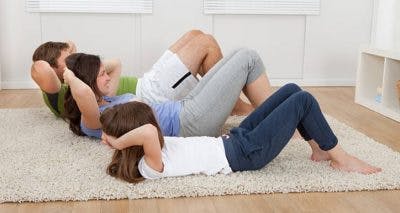
Crunches specifically target your abdominal muscles for better posture and balance.
Make sure your child has a padded mat below them or uses a stability ball to reduce friction against the tailbone.
Individuals can also practice side crunches. These are much easier. Have your child sit in a chair, raise their left arm in the air, and then tilt their body to the right.
They should feel the stretch on their left side. Hold for 5-10 seconds, and then repeat with the right arm up and tilt to the left.
4. Knees to Chest
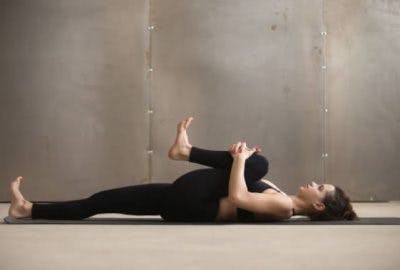
Have your child lay flat. Then, bend one knee and use the arms to help bring it to the chest. Make sure that your child is not relying solely on their arms to keep the leg up. The leg should be engaged.
Another variation of this exercise is to tap the right elbow with the left knee and the left elbow with the right knee. This creates more dynamic, twisting motions that will also work the sides of the trunk.
Once your child masters the form, encourage them to perform a certain amount of reps or to increase speed.
5. Planks
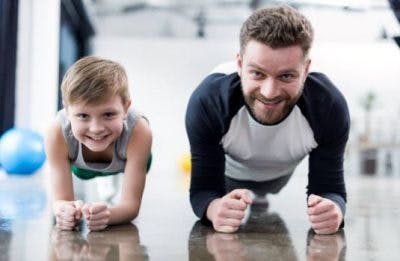
Planks engage the entire body, which makes them a very efficient full-body exercise.
Have your child get into a pushup position with the hands a little bit wider than shoulder-width apart and neck in alignment with the back. Their head should be facing down towards the ground.
If a regular plank is too difficult for your child, have them get on their knees instead of their toes, or on their forearms instead of their hands. This will reduce pressure and increase stability while strengthening the core.
Hold the position for 20-30 seconds, or as long as your child can.
6. Bridges
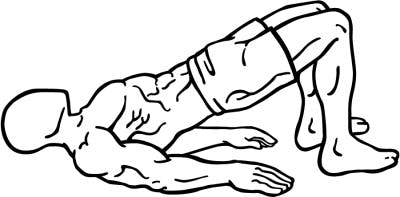
Have your child lay on their back with knees bent and feet flat.
Make sure that their hands are by their side and that the palms are facing down.
Then, tell them to lift their butt up towards the ceiling. Their mid to lower back should be raised off the ground.
Have them hold for a few seconds and then lower themselves down.
7. Wheelbarrow
Have your child lay on their stomach. Slowly grab their lower legs or feet and lift so that the lower body is in the air.
Then, have your child get onto their hands or forearms and lift the rest of the body up.
To make it more challenging, have your child move forward and backward a few steps.
8. Hula Hooping

Hula hooping is fun, so for many kids, it won’t feel like exercising at all.
The circular motions stimulate the core, but your child will be so distracted trying to keep the hula hoop from falling that they won’t realize how many repetitions they’re performing.
A weighted hula hoop will be easier to keep going for longer periods, while a lighter hula hoop will require more movements and energy.
Cerebral Palsy and Exercise
Cerebral palsy will affect the movements of every child a little differently, so be sure to adjust each exercise to your child’s individual abilities.
Core exercises for cerebral palsy patients should be challenging but also realistic.
If your child has very limited movement, have them sit on a stability ball for a few minutes. It will make them constantly move a little bit to maintain their center of gravity.
The video below will demonstrate some core exercises that your child may be able to practice if they are in a wheelchair.
Good luck!

